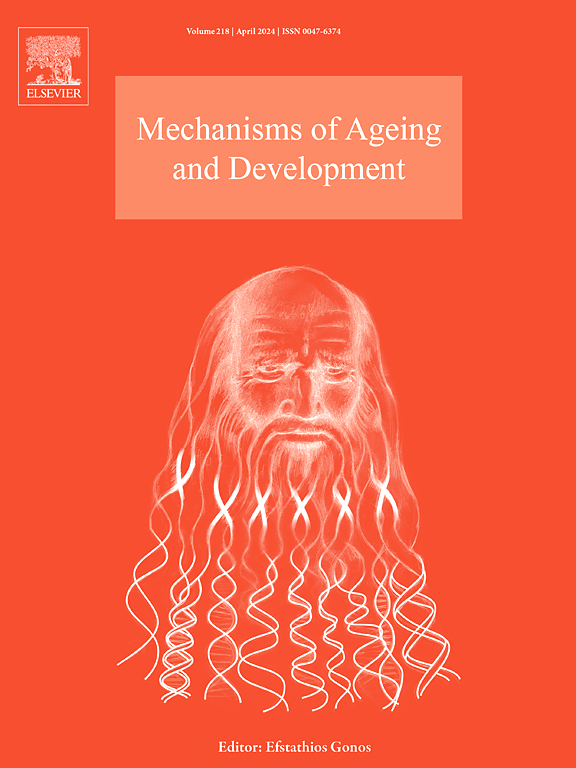The African turquoise killifish (Nothobranchius furzeri): A model of age-related diseases and declining regenerative capability across multiple organs
IF 5.1
3区 医学
Q2 CELL BIOLOGY
引用次数: 0
Abstract
African turquoise killifish (Nothobranchius furzeri) has emerged as a promising vertebrate model for aging research because of its unique characteristics. Its exceptionally short lifespan and rapid aging make it an ideal model for studying age-related phenomena in compressed timeframes. This species exhibits hallmarks of aging observed in longer-lived vertebrates, including motor neuron degeneration, muscle weakness, and impaired regenerative capacity. These features make it valuable for investigating molecular and cellular mechanisms of age-related diseases and tissue regeneration. However, current research has primarily focused on brain aging and neurodegeneration, while systemic age-related changes across organs remain underexplored. The impact of aging on tissue regeneration in this model needs comprehensive investigation. This review summarizes current research using African turquoise killifish on age-related diseases and tissue regeneration in multiple organs. By integrating aging and regeneration biology, this review offers a perspective that expands the utility of this species beyond neurobiology, positioning it as a promising model for gerontology and regenerative medicine. We discuss limitations and future directions to advance its use in aging studies across multiple organs. Future research on African turquoise killifish will contribute to identifying therapeutic targets and developing interventions for age-related diseases, ultimately extending healthy life expectancy in humans.
非洲绿松石鳉(Nothobranchius furzeri):年龄相关疾病和多个器官再生能力下降的模型
非洲绿松石鳉(Nothobranchius furzeri)由于其独特的特性而成为一种有希望用于衰老研究的脊椎动物模型。它异常短的寿命和快速老化使它成为在压缩时间框架内研究年龄相关现象的理想模型。该物种表现出在长寿脊椎动物中观察到的衰老特征,包括运动神经元退化、肌肉无力和再生能力受损。这些特征使其对研究年龄相关疾病和组织再生的分子和细胞机制具有重要价值。然而,目前的研究主要集中在脑老化和神经退行性变上,而与年龄相关的系统性器官变化仍未得到充分探索。衰老对该模型组织再生的影响有待全面研究。本文综述了目前利用非洲绿松石鳉治疗年龄相关疾病和多器官组织再生的研究进展。通过整合衰老和再生生物学,本综述提供了一个视角,将该物种的用途扩展到神经生物学之外,将其定位为老年学和再生医学的一个有前途的模型。我们讨论了其在多器官衰老研究中的局限性和未来发展方向。未来对非洲绿松石鳉的研究将有助于确定与年龄有关的疾病的治疗靶点和制定干预措施,最终延长人类的健康预期寿命。
本文章由计算机程序翻译,如有差异,请以英文原文为准。
求助全文
约1分钟内获得全文
求助全文
来源期刊
CiteScore
11.10
自引率
1.90%
发文量
79
审稿时长
32 days
期刊介绍:
Mechanisms of Ageing and Development is a multidisciplinary journal aimed at revealing the molecular, biochemical and biological mechanisms that underlie the processes of aging and development in various species as well as of age-associated diseases. Emphasis is placed on investigations that delineate the contribution of macromolecular damage and cytotoxicity, genetic programs, epigenetics and genetic instability, mitochondrial function, alterations of metabolism and innovative anti-aging approaches. For all of the mentioned studies it is necessary to address the underlying mechanisms.
Mechanisms of Ageing and Development publishes original research, review and mini-review articles. The journal also publishes Special Issues that focus on emerging research areas. Special issues may include all types of articles following peered review. Proposals should be sent directly to the Editor-in-Chief.

 求助内容:
求助内容: 应助结果提醒方式:
应助结果提醒方式:


